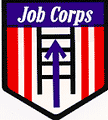|
Job Corps course title: Computer Aided Drafting - CAD. Students in this class learn computer aided drafting applications with AutoCAD 2000 LT. Students will learn basic, intermediate and advanced applications starting with setting up drawings, units, editing commands, creating layers, geometric construction, block, dimensioning and tolerancing, isometric, attribute, 3D drawings, rendering and solid modeling. Limited class size.
On the job, working from rough sketches, verbal instructions, and/or engineering data, drafters may produce working drawings by hand, such as schematic drawings, process and instrumentation diagrams, and drawings of finished products, using drafting machines, rules, curves, triangles, and other drawing tools. More often, these workers produce drawings using a computer assisted drafting system (CAD). Mechanical drafters make plans and designs for many kinds of mechanical equipment. They may be involved with both a mechanical product and the machines used to make the product. Trainee drafter is the typical entry-level job. The work of a trainee drafter is less complicated and often routine, and the work is closely supervised and reviewed.
Back to Top
Drafting rooms are usually set up to make the worker as comfortable as possible. They are well-lit and kept at a comfortable temperature. Most drafters work at computers. Drafting tables are adjustable so that workers who do drafting by hand may stand or sit as they please, but drafters perform very detailed work for long periods of time, and the work may cause eyestrain and muscle pain.
Promotion for a drafter is usually in the form of more pay and responsibility and, in some instances, having the company recognize them for their work. Outstanding workers may be made supervisors, and supervisors may get to management jobs, but most drafters will stay in drafting jobs.
The California Projections of Employment, published by the Labor Market Information Division of the Employment Development Department, estimates that the number of drafters in California will reach 36,760 by 2005, an increase in new jobs of 5,090 over the number there were in 1993. There will also be an estimated 7,600 job openings due to people retiring or leaving the occupation. Added to the 5,090 new jobs expected, this makes for an estimated total of 12,690 job opportunities through 2005. Many employers require an associates or higher college degree. New drafters entering the labor market will face competition. Those who have experience and are skilled in CAD will have the best chances, but most drafters tend to be in industries that are very sensitive to changes in the general economy.
| California |
Median
$17.73 |
Mid-Range
(25th to 75th percentile) $13.92-$22.10 |
To enroll in this San Jose Job Corps Course: 540 TABE Math/Reading score OR GED/HS diploma. Plus entrance examination.
Job specific skills: Employers expect Drafters and Design Drafters to have a high school education, and training in drafting from a trade school or college. Many require a full associate's degree in drafting or a specialized area of drafting. It is necessary for drafters at all levels to be trained in computer assisted drafting (CAD). In general, the Drafters with the most formal education will have a bigger choice of jobs and better chances for promotion.
Subjects to study include the basic sciences, and math, along with mechanical drawing and design courses. Talent for drawing and lettering is important along with the ability to visualize 3-D objects from two-dimensional drawings, and the ability to make clear verbal and written presentations of drawings and plans.
Back to Top
|
|



